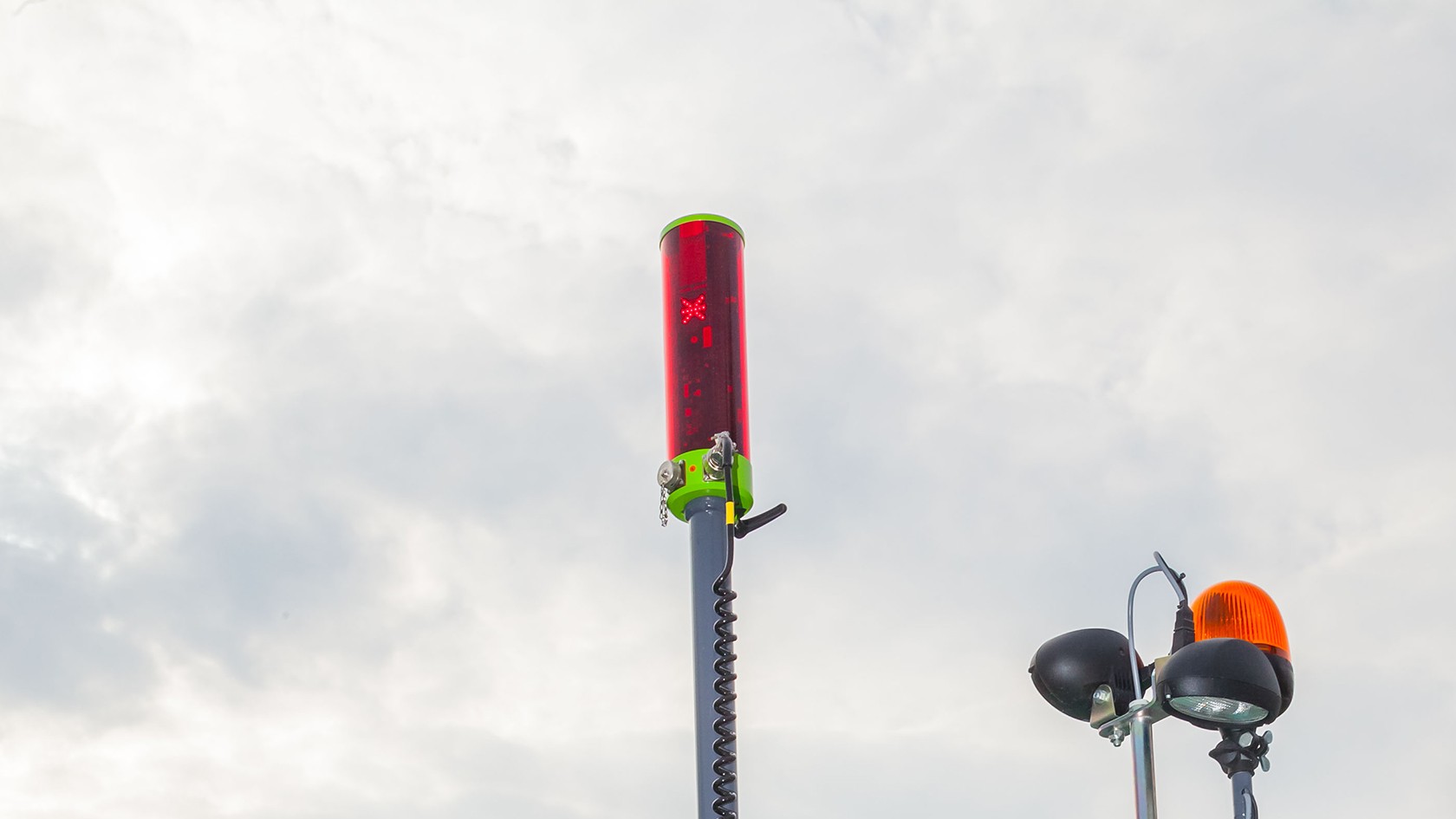Laser receiver


In contrast to acoustic sensors, optical sensor systems use laser beams instead of sound. The great advantage of optical sensors is that measurements cannot be falsified by external influences such as wind or fluctuations in air density. A further benefit is the extensive range of the laser beams, permitting distances of up to 220 yards (200 m) between the transmitter and receiver.
When using a laser receiver for grade and slope control, the paving height is determined by receiving laser beams. A rotating beam emitted by the laser transmitter generates a precise plane of laser light, which is detected by the receiver as an artificial reference. This offers the advantage that the laser plane is independent of ground conditions.
If the receiver moves above or below the laser plane, the deviation in grade is detected and passed on to the VÖGELE system for automated grade and slope control. The Niveltronic Plus then moves the hydraulic rams for the screed tow points up or down to bring the screed back to its correct position.
Its wide measuring range of ± 4.33 in (11 cm) means that the laser receiver can be used even on bases with significant undulations. No adjustment in height is required for either the rotary laser or the receiver.
